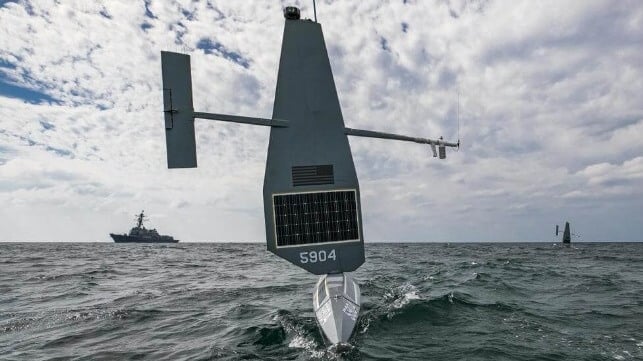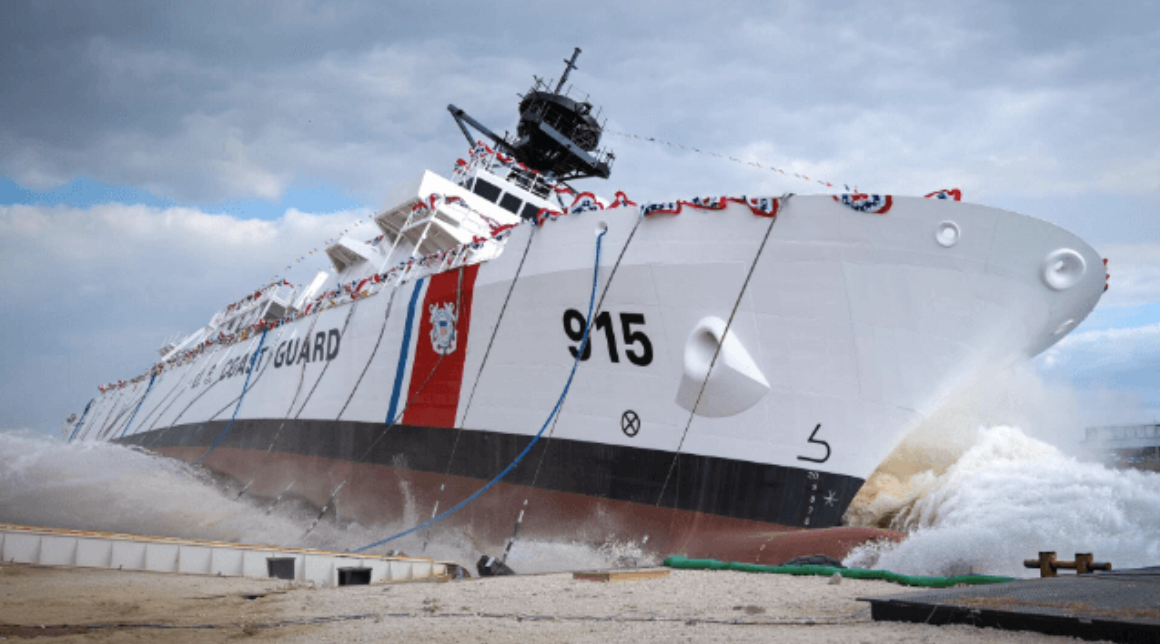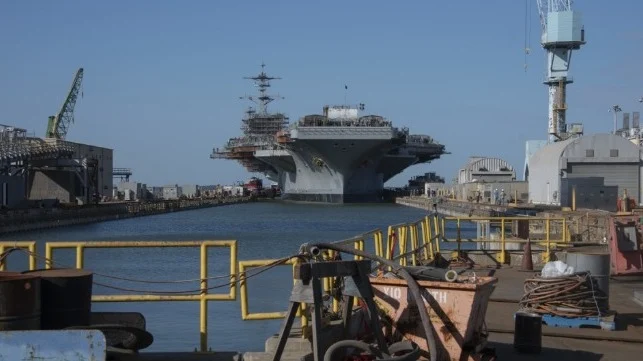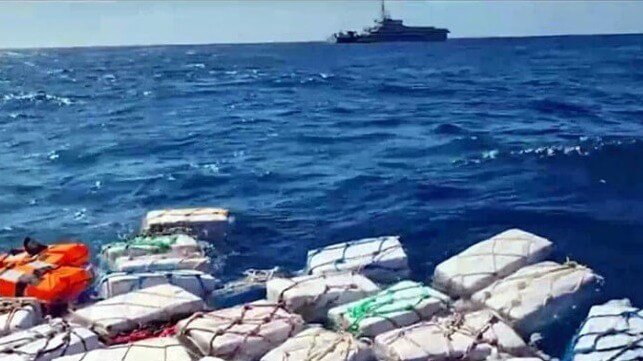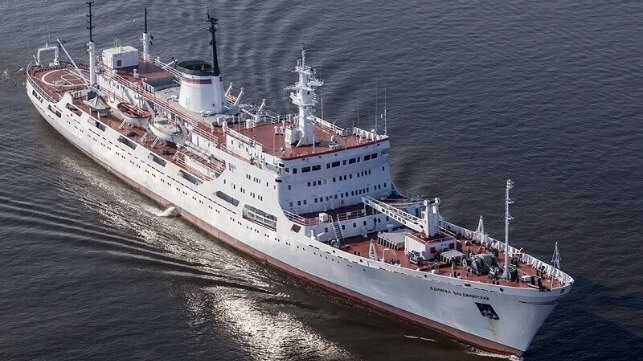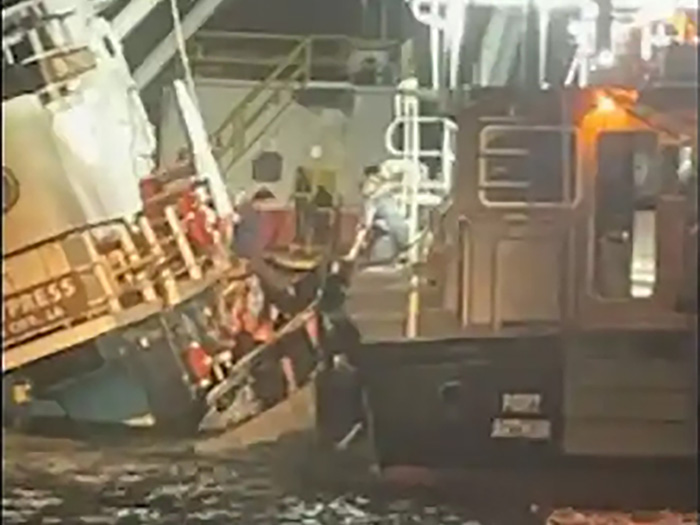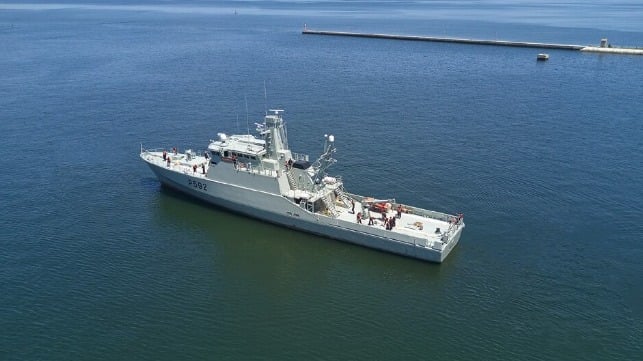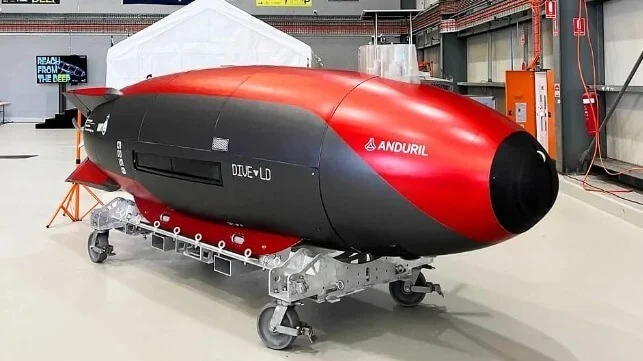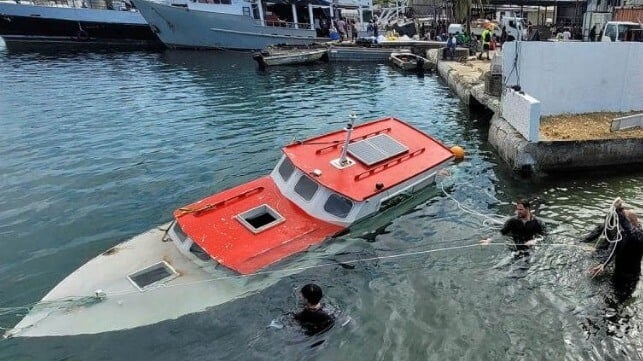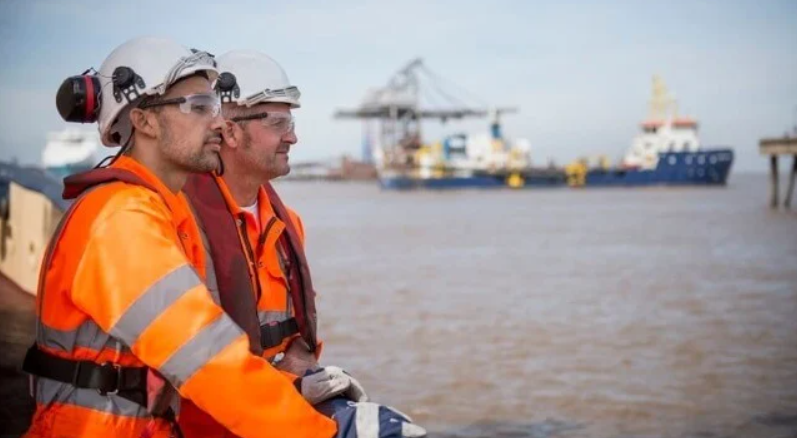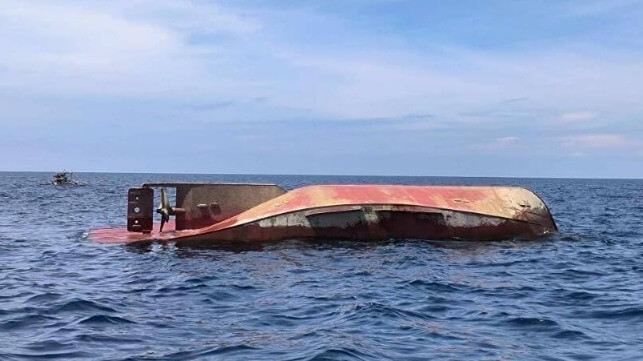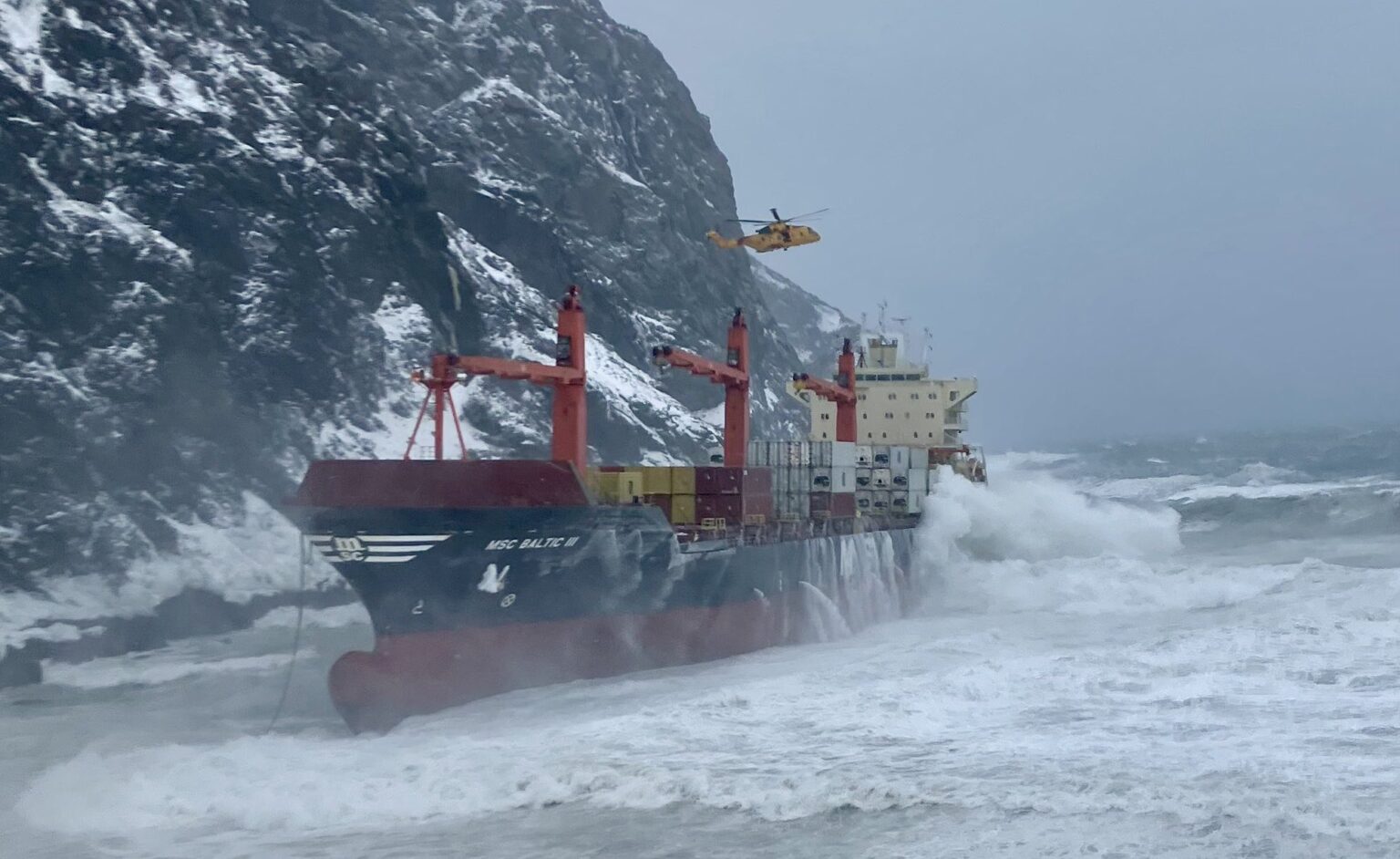[By George Galdorisi]
While it will take years to unpack all of the lessons learned from the ongoing war in Ukraine, one method that has surfaced during this conflict that connects maritime warfare and unmanned surface vehicles in the use of USVs armed with explosives to attack naval vessels. This is a tactic and concept of operations that has been frequently discussed and simulated, but until now has been hypothetical.
Today it is real. As described in reports of Ukraine’s attacks on Russian naval vessels in the Black Sea, armed USVs have been used with deadly effect. Consider how naval analyst H.I. Sutton described the momentous impact of these attacks and what they portend for the future of maritime warfare:
“Ukraine’s attack on Sevastopol on October 29, 2022 will go down in history as the first major example of what many believe is a new era of drone warfare. The Russian Navy Black Sea Fleet found itself defending against both surface and aerial drones. Seven uncrewed surface vessels (USVs) were involved, along with nine uncrewed air vehicles (UAVs)…Individually, they may pose only a limited danger, but their low cost and the low risk associated with their use likely will lead to them becoming a persistent threat. They may shape future wars just as their aerial counterparts are already doing. But will leading navies accept the obvious lessons and initiate similar low-cost armed USVs?”
In this era of great power competition, unmanned maritime systems have begun to take center stage and are now on an accelerated development path for reasons that are clear. Like their air and ground counterparts, these unmanned maritime systems are valued because of their ability to reduce the risk to human life in high-threat environments, offer options for more aggressive and risk-worthy strategies, to deliver persistent surveillance over areas of interest, and other options that derive from the inherent advantages of unmanned technologies.
To be clear, the accelerating development of unmanned maritime systems has not been restricted to the United States. The U.S. Navy is far from being the only navy keenly interested in unmanned surface vehicles. Indeed, 2022 may well be remembered as a key milestone for the development of USVs due to their inclusion in an unprecedented number of international exercises, experiments, and demonstrations that have spanned the globe. Over the course of these events, unmanned maritime systems have performed an increasingly ambitious and complex series of missions, giving greater confidence to those nations and navies who see them as an important part of their fleets. The highlights of these events show the keen interest of many navies in finding new roles for these unmanned systems.
International Maritime Exercise 2022 (IMX 22), held under the auspices of U.S. Naval Forces Central Command, Commander Task Force 59 in the Arabian Gulf, focused on the integration of manned and unmanned vessels, and included operations with a number of regional partners.3 Admiral Michael Gilday, U.S. Navy Chief of Naval Operations, noted that a key mission for TF-59 is to “Enable more rapid fielding of unmanned systems.” Navies and Coast Guards of the nations and navies involved in IMX 22 worked to fully explore the capabilities of unmanned systems such as the Saildrone, the MARTAC MANTAS and Devil Ray, and many other USVs from participating nations. This is the first time this many nations participated in an event of this type. In the run up to IMX 2022, the Commander of U.S. Naval Forces Central Command, U.S. 5th Fleet, Vice Admiral Brad Cooper, also noted: “The Navy has been working with manufacturers to test new technologies, including firms such as Saildrone and MARTAC under a contractor-owned, contractor-operated model.”
What is noteworthy about TF 59 operations in the Arabian Gulf is the fact that IMX 22 was not a one-off event. Rather, manned-unmanned integration operations in the Arabian Gulf continue. In October 2022, the United Kingdom and the United States held joint drills in the Arabian Gulf in the wake of Iran’s seizure of a U.S. Navy Saildrone USV. As of the end of 2022, the U.S. Navy had 20 USVs in or near the waters of the Arabian Gulf. Indeed, the United States and its allies want a force of 100 unmanned surface vessels patrolling waters from the Red Sea into the Arabian Gulf by the end of 2023.
In another international exercise focused on missions for unmanned maritime systems, the Australian Defence Force (ADF) hosted Exercise Autonomous Warrior 2022 (AW 22). Nations joining this Royal Australian Navy-led exercise included New Zealand, the United Kingdom, and the United States while featuring a total of 30 autonomous systems. The unmanned surface vehicles that were part of this two-week exercise were the Saildrone, MANTAS and Devil Ray, the Atlas Elektronik ARCIMS, the Elbit Systems Australia SEAGULL, and the Ocius Bluebottle.
Another exercise, the biannual Rim of the Pacific Exercise (the world’s largest international maritime exercise) was especially noteworthy as the U.S. Navy inserted four unmanned surface vehicles in this major event. Two of these USVs included platforms that were purpose-built to be unmanned systems, including the Sea Hunter and the Sea Hawk. The other two systems —Nomad and Ranger — were previously manned vessels that were equipped with autonomous technology under the auspices of the Ghost Fleet Overlord program. The 2022 RIMPAC exercise gave the event’s 26 participating nations an opportunity to see these USVs in action. The U.S. Third Fleet Commander, Vice Admiral Michael Boyle, the commander of RIMPAC 2022, put special emphasis on the unmanned vehicles participating in RIMPAC, as well as manned-unmanned integration:
“What’s also new in this RIMPAC is a lot more integration of unmanned systems—on the surface, in the air, and under the surface. The four unmanned surface vehicles that the Navy brought to the exercise carried specialized payloads for anti-submarine warfare, intelligence, surveillance and reconnaissance, domain awareness and communications capability. So that’s all kind of new.”
RIMPAC was valuable for getting deckplate-level feedback from sailors operating these four USVs. One official from the Navy’s program office for unmanned maritime systems noted that “One of the biggest pieces of feedback we’re getting is that they’re [sailors operating these USVs during RIMPAC] talking about payloads, they’re talking about capabilities. They’re not talking about the autonomy. They’re not worried that [the USV is] going to ever run into something.”
On the other side of the world, NATO exercises REPMUS-22, and the follow-on Dynamic Messenger 22, provided an opportunity for NATO nations to evaluate unmanned systems and their ability to coordinate on, above, and under the sea. Led by Portugal and conducted near the Troia Peninsula, these exercises focused on the integration of 120 autonomous assets into a single network. A number of NATO commands participated, including NATO’s Allied Command Transformation, NATO’s Allied Maritime Command, the NATO Center of Excellence, and NATO Center for Maritime Research and Experimentation. This enabled partner nations to learn best practices regarding how to shepherd unmanned systems into their respective navies.
In late 2022, the U.S. Navy-led exercise Digital Horizon 2022, a three-week event in the Middle East, focused on employing artificial intelligence and 15 different unmanned systems (12 USVs and three UAVs), many of which were operated in the region for the first time. The exercise, meant to be a continuation of IMX 22 but at significantly larger scale, was hosted by Task Force 59, and built on the work done during IMX 22. Indeed, Digital Horizon is the largest international unmanned exercise ever held to date.
Digital Horizon brought together new, emerging unmanned technologies and combined them with data analytics and artificial intelligence to enhance regional maritime security and strengthen deterrence. The exercise featured 17 companies that collectively brought 15 different types of unmanned systems, ten of which operated with US 5th Fleet for the first time.13 As Captain Michael Brasseur, then-commodore of Task Force 59, noted, one of the objectives of Digital Horizon 2022 was to use unmanned maritime vehicles to conduct intelligence surveillance and reconnaissance missions, including identifying objects in the water and spotting suspicious behavior.
From the perspective of the U.S. Navy, these exercises and initiatives are important and represent a significant course change as the Navy works to convince Congress that its plans for unmanned systems are sound. The development and fielding of these unmanned systems will ultimately be critical for the U.S. Navy to reverse decades of pressure that have long threatened to shrink its force structure. Secretary of the Navy Carlos Del Toro explained the Navy’s new “show, don’t tell” philosophy built on an ongoing series of exercises, experiments, and demonstrations. According to Secretary Del Toro, these events further indicate that the Navy is “On the same page as Congress.” As Del Toro described it:
“The Navy has a responsibility to be able to prove that the technology that Congress is going to invest in actually works and it meets what we need to address the threat. I think that’s the responsible thing to do…I don’t see it as a fight between Congress and the Department of Navy. I think we’re aligned in our thinking about what has to be done.”
Conclusion
World navies are keen to bring more both commercial-off-the-shelf (COTS) unmanned maritime systems, as well as other USVs in various stages of development, to exercises, experiments and demonstrations. This will enable them to not only demonstrate their own capabilities, but to also learn best practices by observing the operations of unmanned maritime systems of other nations. These efforts are virtually certain to accelerate the development of these USVs, and for the U.S. Navy, hasten the goal of a 500-ship Navy that is envisioned to one day have 350 crewed ships and 150 unmanned vessels working together.
Captain George Galdorisi (USN – retired) is a career naval aviator whose thirty years of active duty service included four command tours and five years as a carrier strike group chief of staff. He began his writing career in 1978 with an article in U.S. Naval Institute Proceedings. He is the author of 15 books, including four New York Times best-sellers. The views presented are those of the author, and do not reflect the views of the Department of the Navy or the Department of Defense.
This article appears courtesy of CIMSEC and may be found in its original form here.


